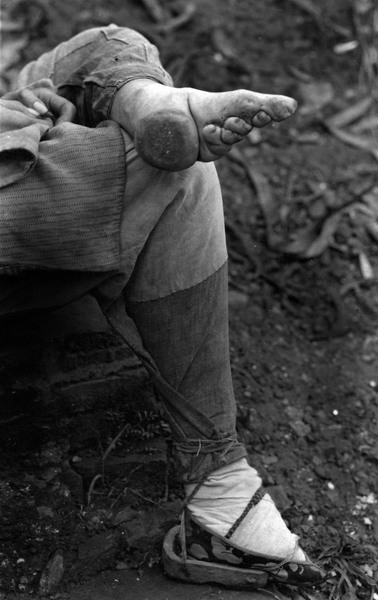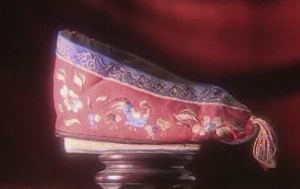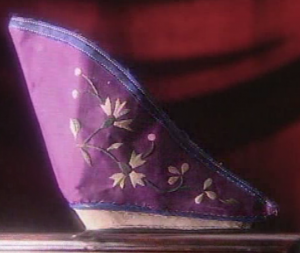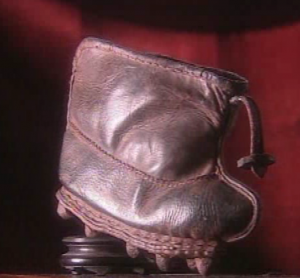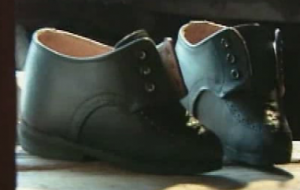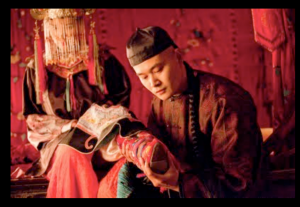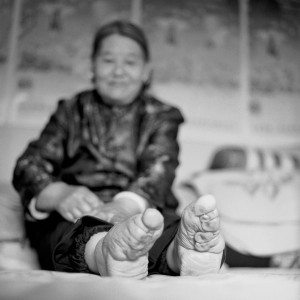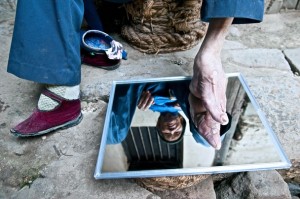Dorothy Ko, in her articles The Body as Attire and Footbinding and Fashion Theory, highlights the problems that result when scholars try to compare cultural practices between the East and the West as they relate to fashion. Ko asserts that the lack of academic and historical information about foot-binding has lead to an oversimplification of the cultural practice and its significance within Chinese society.
In The Body as Attire, Ko explains that our understanding of foot-binding is based off of firsthand accounts of western missionaries who entered China with prejudices about the inferiority of Chinese culture. Their goal upon arriving in China was to expose the horrible aspects of foot-binding and work to abolish the practice altogether, which explains the use of “scientific tone of objective observation” in articles about foot-binding (Ko 9).
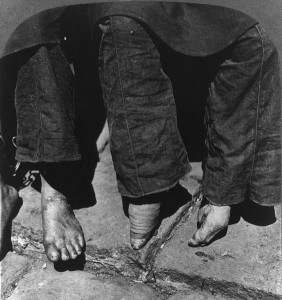
Natural Feet v. Bound Feet Comparison (https://commons.wikimedia.org/wiki/File:Natural_vs._bound_feet_comparison,_1902.JPG)
Western missionaries and non-Chinese sociologist failed to understand how foot-binding was the basis of gender identity, cultural identity, and national identity. Foot-binding was part of a woman’s beauty ritual, having unbound feet was considered ugly and uncivilized. Foot-binding embodied wen civility, the highest form of cultural prestige which placed emphasis on concealing the body (Ko 14). Concealment was a form of respect and of self-control. The designs and embellishments on the lotus shoes were a reflection of a woman’s socioeconomic status. Foot-binding was also an expression of political allegiance and ethnic identity (Ko 17). Chinese people considered groups from other nationalities (i.e. Korea, Japan) barbarians because they did not practice foot binding, which was justification for their imperial conquests (Ko 15). Han-Chinese did not view people from other ethnic groups (i.e. Manchu) as Chinese if they did not bind their feet because their choice was viewed as a lack of appreciation for wen civility.
Footbinding in Fashion Theory focuses more on the early interactions between westerners and Chinese people. Dorothy Ko’s analysis of western observations of foot-binding shows the reader that westerners viewed Chinese fashion as timeless costumes. While western scholars felt as though the Chinese were easier to relate to than other racial/ethnic groups (i.e. blacks, Hispanics), they perceived Western fashion to be more modern.
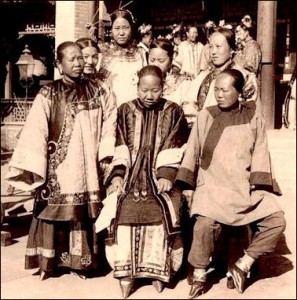
Chinese women wearing lotus shoes and long robes (http://factsanddetails.com/media/2/20111104-Wikicommons%20Foot%20binding%20wealthy.jpg)
Westerners believed that Chinese people were similar to them because of their fairer skin and straight hair. However, their observations of Chinese facial features and stature are indicative of racial tensions: “for they are great people, on par with ourselves, but of uglier aspect, with little bit of eyes” (Footbinding in Fashion Theory 9). As a result, westerners observed that Chinese fashion had adopted aspects of western fashion, such as shoe designs and stockings, but saw their creations as unoriginal copies (Footbinding in Fashion Theory 9). Westerners did not believe Chinese fashion was modern there were not as many visible changes in the cut or style of garments as there were in Europe. However, they acknowledged the extent to which fashion was meant to maintain political order and national identity (Footbinding in Fashion Theory 11). Lastly, westerners were perplexed by the idea of wen civility. In attempting to study and observe Chinese people, they were unable to examine unbound feet and rarely saw Chinese women without their makeup and hair done. The inability to fully understand the effects of foot-binding on the physical condition and psyche of Chinese women led to the exoticism of Chinese women as “mysterious” or “unseen”.
Ultimately, Dorothy Ko’s analysis of foot-binding is intended to change the ways in which scholars approach the subject of foot-binding. One has to examine Chinese history and understand how western perceptions of foot-binding have limited our understanding of the complexities of the practice and ways in which it shaped Chinese identity. The goal is not to compare foot-binding with western fashion culture, but view each interpretation of foot-binding as a unique and valid expression of cultural pride and identity formation.


